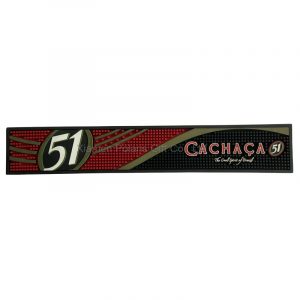Bacardi is owned by Don Facundo bacard í mass ó)It was established in Santiago (Cuba) on February 4, 1862, with its headquarters in Hamilton (Bermuda). Bacardi also has several other brands including grey goose vodka, Dewar’s Scotch, Bombay Sapphire Gin, Eristoff vodka, Martini & [...]
Classification of visor cap
1. Wide eaves and empty caps
Material generally has plastic composition, with anti-ultraviolet, sunshade function. The utility model has the functions of a sun cap and sunglasses, and is suitable for outdoor cycling.
2. Short eaves and visor cap
Material is generally similar to [...]
Blue and white double-sided copper plate paper jam
It is made from chemical bleached wood pulp with a base weight of about 150 g / m2. Uncoated is called west card, double-sided coated is copper west card.
Main use: West card paper is mainly used for [...]
1. After cleaning, put it in a cool and ventilated place to dry naturally. Do not put it in the sun or in a high temperature place to bake, so as to prevent degumming or degumming and accelerate aging.
2. Non professional rubber shoes should [...]
COM interface
COM interface, also known as serial port, is connected to the back of desktop computers, and is currently being eliminated. The advantages are low price, support for brushing (some mobile phones can only use serial port line); the disadvantages are that it is [...]
1. According to the different colors of grapes, grape varieties can be divided into white varieties (white skin and white meat), red varieties (red skin and white meat) and dyed varieties (red skin and red meat). White wine can be brewed from white varieties, [...]
Bottled and tinned cooked beer has a shelf life of not less than 120 days (excellent, first grade) and 60 days (second grade). The shelf life of bottled fresh beer is not less than 7 days. The shelf life of canned and barreled fresh [...]
Brewing technology
Duvel brewery is famous for its beer fermentation technology in the world beer industry. In order to improve the taste of vedett beer, the second fermentation will be carried out for several weeks after the beer is bottled or bottled.
The bottled white bear [...]
France
In France, most adults go to church for midnight mass on Christmas Eve. After that, the family will go to the home of the oldest married brother or sister for dinner. In this meeting, we discussed the important matters at home, but in case [...]
The pad printing process is very simple, using steel (or copper, thermoplastics) intaglio, using a curved surface pad head made of silicone rubber material, dip the ink on the intaglio onto the surface of the pad head, and then press it on the surface [...]
 It’s hard to know exactly who first created CASA, but it is generally believed that Cachaca was produced between 1530 and 1550, because it was at this time that sugarcane was introduced into Brazil as an important cash crop in the colony. And the slaves who planted and harvested sugarcane often collected the surplus of sugarcane processing in the farm and let it ferment into alcoholic beverages.
It’s hard to know exactly who first created CASA, but it is generally believed that Cachaca was produced between 1530 and 1550, because it was at this time that sugarcane was introduced into Brazil as an important cash crop in the colony. And the slaves who planted and harvested sugarcane often collected the surplus of sugarcane processing in the farm and let it ferment into alcoholic beverages.

